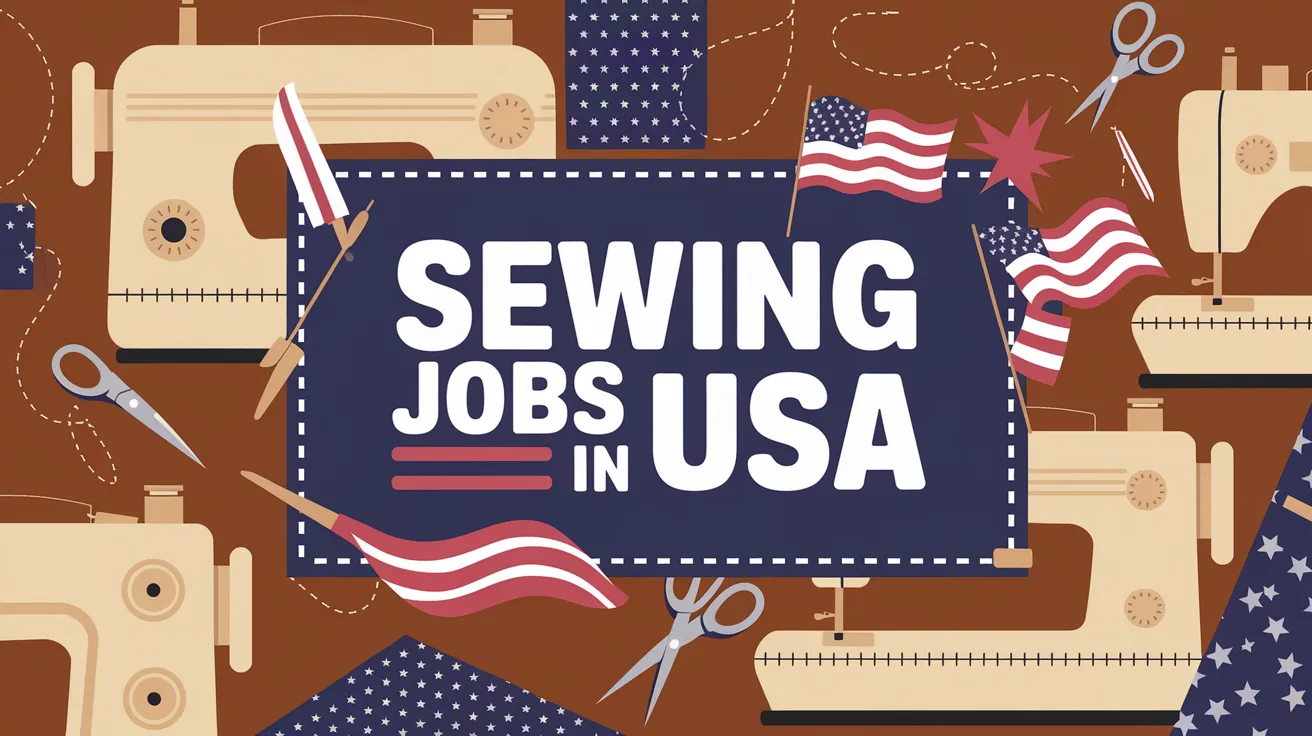
Sewing in the simplest terms of meaning is the action of joining materials using stitches made by hand or by machine. Sewing employment includes a broad range of occupations in the United States industry of cloth, apparel and fashion, manufacturing, and customized stitching professions
These professions hold great potential for skilled workers. Let’s take a look at all the details about sewing jobs in the USA.
Job Details
- Job Title: Sewing Professional (Various Roles)
- Location: United States (Multiple locations depending on employer)
- Visa Sponsorship: Available (H-2B, EB-3, or other relevant work visas)
Also Check: Livestock Handler Jobs in USA with Visa Sponsorship 2024 ($12 to $16 Per Hour)
Requirements
- Educational Background: Employment of SOC 261 sometimes requires at least a high school education or a general equivalency diploma (GED).
- Employment experience in sewing, fashion designing, or work experience in the textile industry may be useful.
- Technical Skills: The candidate should be conversant with the use of sewing machines, cutting of materials, and working with various fabrics. There is also a need to be familiar with patterns, measurements, and alterations.
- Attention to Detail: Closeness of work and degree of delicacy are important in sewing positions, especially in careers that deal with made-to-order clothing or fashion designer wear.
Benefits
- Competitive Salary: Wages of sewing jobs in the USA are normally good with chances for overtime payment rates. Wages may depend on working experience, geographical area, and position of the specific job.
- Job Stability: There is always demand for well-trained and professional sewers especially for fashion and manufacturing industries. This creates job security and gives long-run employment chances to the unique population of women.
- Career Growth: Higher-level jobs that sewing professionals can aspire to include sewing supervisors, pattern makers, or even fashion designers with better and more training.
- Health and Retirement Benefits: Most companies provide medical coverage and pensions and most other benefits some of which are listed below.
Duties
- Cutting and Measuring Fabrics: An important aspect that should be observed in the production process is that of cutting and measuring fabrics appropriately in a bid to have the final product manufactured in the right measurements.
- Reading and Following Patterns: Tailors and seamstresses should be well conversant with pattern instructions, layouts, and any technical drawing to be able to produce certain clothes or textile material
- Performing Alterations: Numerous sewing jobs involve altering clothes; hemming, resizing clothes, or even mending clothes that have been damaged in some way.
- Quality Control: Some of the job accountabilities are to make sure that products are free from defects, and seams have the right number of stitches as well as any loose threads that can be seen
Salary Expectations
Sewing job remunerations in the USA depend on factors such as; location of work, experience, and the job description in place. On average, sewing professionals can expect to earn:
- Entry-Level Positions: $25 000 to $35 000 for a year
- Experienced Sewers: Per year this ranges from $35,000 to $50,000
- Specialized Roles (e.g., Tailors, Pattern Makers): Of the salary of $40,000 to $60,000 per year.
- Supervisory Positions: between fifty to seventy thousand US dollars per year
Types of Jobs
Tailor: Tailors make clothes for individual customers, alter clothes add or subtract some sizes, and also mend clothes.
Seamstress/Seamster: Tailors (female or) dressmakers/sewers or stitchers dressmakers (male or) tailors stitchers, sew and join clothes, accessories, or home textiles.
Pattern Maker: Pattern makers are involved in the production of garments and their preparation; they design patterns for apparel as per the designer’s conception.
Costume Designer: Theatrical costume makers and tailors are specialty costume designers that design and do sewing for stage burlesque and motion pictures as well as other occasions.
Upholsterer: Sewers work on fabricating and construction of furniture and transport vehicle seats and other similar products.
Embroidery Machine Operator: These employees use embroidering machines to integrate detail works, logos, or brand logo designs on apparel and fashion fabrics.
Garment Assembler: Manufacturing workers known as garment assemblers have the duties of sewing and assembling parts of garments or other related accessories.
Textile Worker: The category of employees practicing in this industry includes but is not limited to the following; Weavers, knitters, and spinners, Tailors who stitch the fabrics into useful commodities, and Quality controllers.
Sewing Supervisor: Sewing supervisors coordinate sewing sub-groups to achieve the laid down firm targets for production and quality.
Industrial Sewing Machine Operator: These specialists use industrial sewing machines in a production setting and they sew through bulky fabrics such as leather or canvas.
Also Check: Orchard Worker Jobs in USA with Visa Sponsorship 2024 ($13.01 Per Hour)
Job Application Process
- Search job options: Some of the platforms that help to look for job options include; social networks and job search sites, forums and job-related boards, company websites, and regular career sites.
- Prepare a Resume and Portfolio: Make a resume for your sewing experience, skills, qualifications, and achievements. In case one can, then, add the portfolio of the best work done so far.
- Apply for Jobs Online: Either apply directly by uploading your resume and cover letter through, currently available online employment search sites, the company sites, or the employment agencies that focus on sewing and textile-related jobs.






